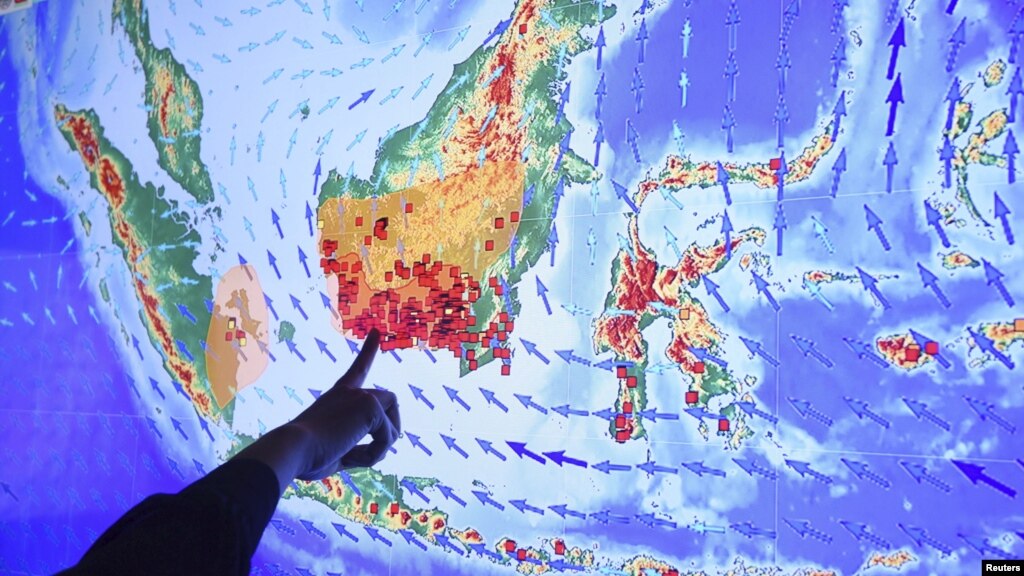The name Orangutans come form Malay meaning "person of the forest". These great apes used to roam the forests of South East Asia but are now only found within the forests of Borneo and Sumatra. Their populations have decreased to a quarter of what they once were a century ago. Threats to their survival on top of deforestation and the subsequent loss of habitat also include illegal pet trade where infants are targeted and to get to them, poachers kill their parents. Now the peat fires in Sumatra are threatening to encroach upon the forest home to the Orangutans.
The Sumatran Orangutans are presently only found in North Sumatran. They are almost exclusively arboreal, meaning they rarely come down from the trees at all, and they are more dependent on the primary forest, being less tolerable of habitat disturbances compared to their Borneo cousins. However, even though the Borneo species are more tolerable, they cannot hold out against peat fires.
 |
| Hotspots in Indonesia taken from a screen at the Fire Command Post at the Ministry of Environmental and Forestry |

As you can see from the pictures above, the hotspots in Borneo do indeed coincide with known Orangutan populations. Hopefully relief reaches these great apes fast enough for their forests to be saved.
References
Foto, A. (2015). hot spots in Kalimantan, Indonesian part of Borneo. Retrieved from http://www.voanews.com/content/reu-indonesia-starts-legal-action-against-companies-linked-to-se-asia-haze/2973583.html
Vidal, J. (2015). Indonesia's forest fires threaten a third of world's wild orangutans. the Guardian. Retrieved 30 October 2015, from http://www.theguardian.com/environment/2015/oct/26/indonesias-forest-fires-threaten-a-third-of-worlds-wild-orangutans
Wwf.panda.org,. (2015). Orangutans. Retrieved 30 October 2015, from http://wwf.panda.org/what_we_do/endangered_species/great_apes/orangutans/











